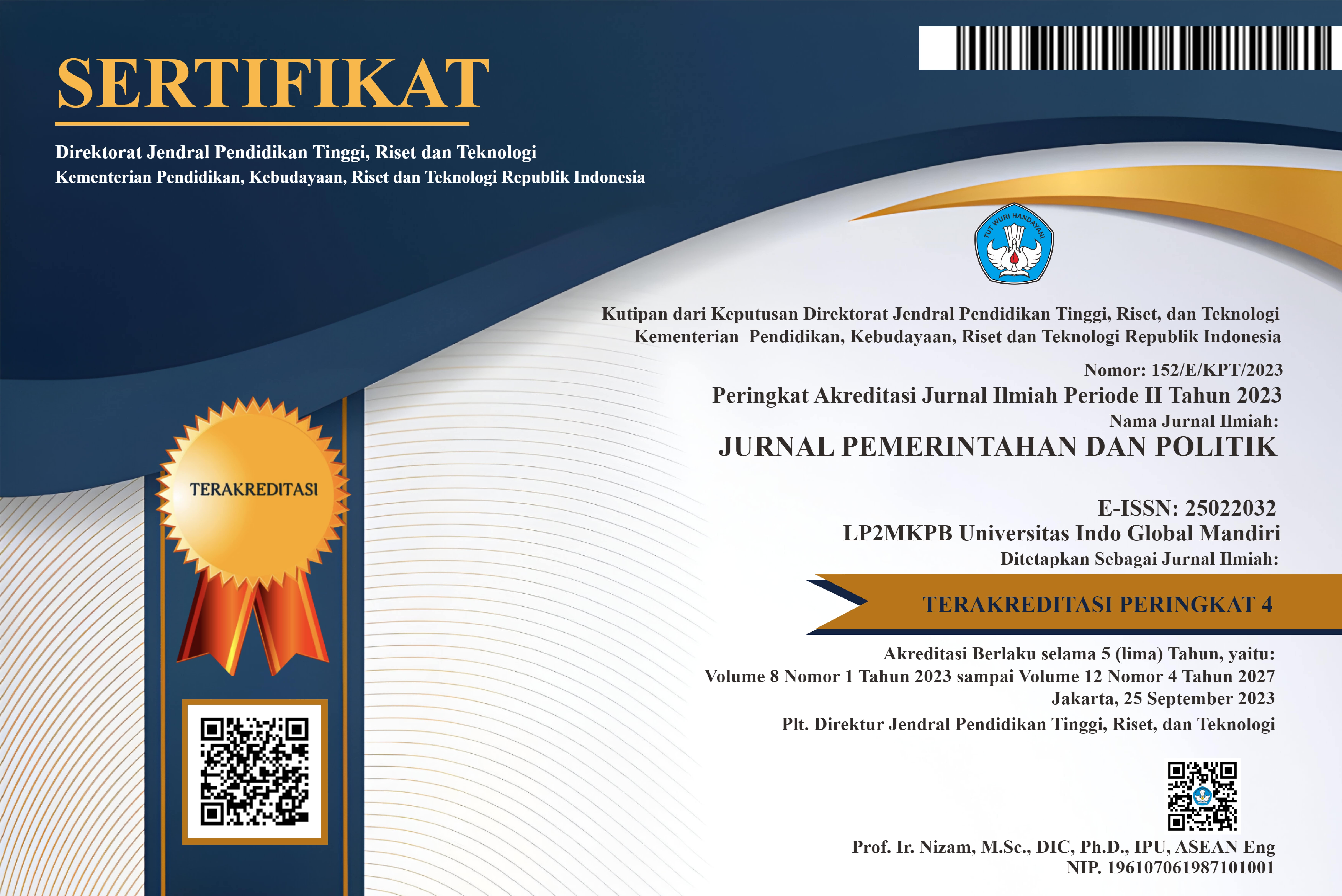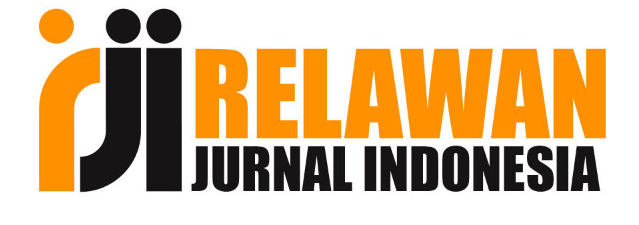FAKTOR PENGHAMBAT DAN PENDORONG PENERAPAN GENDER RESPONSIVESNESS DALAM PENYUSUNAN PROGRAM / PROYEK/KEGIATAN PROGRAM KEMISKINAN (STUDI PROGRAM PENGENTASAN KEMISKINAN DI KABUPATEN OGAN ILIR SUMATERA SELATAN)
DOI:
https://doi.org/10.36982/jpg.v2i1.648Abstract
The long road to achieve women's empowerment and gender equality in the development of Indonesian women have traversed. Various policies and regulations have been made, two of them, a policy that requires the formulation of planning policies and development programs should be gender perspective contained in the regulation of the Ministry of Home Affairs Number 15 in 2008, about Guidelines of the implementation of Gender Mainstreaming in the Region, and Government Regulation Number 8 of 2008 about Stages, the Procedures of the Formulation, Control and Evaluation of the Implementation of the Regional Development Plan. In practice, women's empowerment still have stereotype and gender bias constraints from bureaucrats that the majority of men. Although the bureaucrats already have knowledge and even had received training on the gender perspective in development program, but in fact, they can not able to bring the gender perspective to be program in their unit as the local government working unit (SKPD). It is caused their inability to pull political interest are even more attractive for policy takers at every level of the process of formulation of development programs, so that the issues of gender inequality in development always get the weakening even exclusion so that the problem is not on the agenda at all. The process of formulation of policy issues that have a condition like this, in terms of policy referred nondecision policy formulation process. Policy makers at the top level of each unit of work even at the top levels of district government does not yet have the knowledge and concern for gender mainstreaming.
Keywords: Gender, Development of gender-responsive, Public policy formulation, Nondecision.References
Ahmadjayadi, Cahyana, (2000, November). Prospek pemberdayaan perempuan dalam pelaksanaan otonomi daerah.Rapat Kerja Pusat Studi Wanita Se-Indonesia.Bali.
Amal, Siti Hidayati, (1995). Beberapa perspektif feminis dalam menganalisis permasalahan wanita. Dalam Ihromi, T.O. (Ed.). Kajian Wanita dalam Pembangunan. Jakarta: Yayasan Obor.
Anderson, James E., 2003. Public Policymaking: An Introduction, 5th Eds., Boston: Hougton Mifflin.
Bacchi, Carol Lee. (1999). Women, policy and politics: the construction of policy problem. London: Sage Publications Ltd.
Bloom, Barbara, Barbara Owen, and Stephanie Covington, 2003. Gender-Responsive Strategies: Research, Practice, and Guiding Principles for Women Offenders . National Institute of Corrections, U.S Department of Justice.
Creswell, Jhon W, 2002. Research Design: Qualitative, Quantitative, and Mixed Methods Approaches. Thousand Oaks, California: Sage Publication.
Dye, Thomas R., 2002. Understanding Public policy, 10thEd., New Jersey: Prentice Hall
Dunn, William, 2003. Pengantar Analisis Kebijakan Publik, Ed. Ke-2, Yogyakarta: Gadjah Mada University Press. Samodra Wibawa, Diah Asitadani, Agus Heruanto Hadna, Erwan Agus Purwanto (penerjemah), “Public Policy Analysis: An Introductionâ€, 2nd Ed. 1991, New Jersey: University of Pittsburgh.
Dwiyanto, Agus, (1995, 20 Mei). Penilaian Kinerja Organisasi Publik. Seminar Kinerja Organisasi Sektor Publik, Kebijakan dan Penerapannya, Jurusan Ilmu Admnistrasi Negara, Fakultas Ilmu Sosial dan Ilmu Politik, Universitas Gadjah Mada, Yogyakarta.
Ekowati, Mas Roro Lilik, 2005. Perencanaan, Implementasi & Evaluasi Kebijakan atau Program (Suatu Kajian Teoritis dan Praktis). Surakarta: Pustaka Cakra.
Gerston, Larry N., 2002. Public Policymaking In a Democratic Society: A Guide to Civic Engagement. New York: M.E. Sharpe.
Grindle, Merilee S,. John W. Thomas, 1991. Public Choices and Policy Change: the Political Economy of Reform in Developing Counties. London: The Johns Hopkins University Press.
Jones, Charles O., 1996. Pengantar Kebijakan Publik (Public Policy). Riki Istamto, penerjemah, An Introduction to the Study of Public Policy. Jakarta: PT. Raja Grafindo Persada.
Jun, Jong S., 2006. The Social Construction of Public Administration: Interpretive and Critical Perspectives, New York: State University.
Keban, Yeremias T., 2004. Enam Dimensi Strategis Admnistrasi Publik: Konsep,Teori dan Isu,Yogyakarta: Gava Media.
Lestari, Sri dan Henry, Albertus, (2001). Gender budget sebagai analisis pembangunan.Dalam Jurnal Perempuan No 19 Tahun 2001. Jakarta: Yayasan Jurnal Perempuan.Lemay, Michael, 2002. Public Administration: clashing values in the Administration of public policy, Canada:Wadsworth Thomson Learning
Levine, Charles H., dan B. Guy Peters, serta Frank J. Thompson, 1990. Public Administration: Challenges, Choices, Consequences. Glenview, Illinois: Scott, Foresman/Little, Brown Higher Education.
Lynn, Naomi, Aaron Wildavsky (edt.,) (1990). Public Administration: The State of the Discipline. 1990. New York: Chatham House Publishers.
Miles, Matthew B, dan A. Michael Huberman, 1992. Analisis Data Kualitatif.Jakarta: Universitas Indonesia Press.
Patton, Michael Quinn, 2006. Metode Evaluasi Kualitatif. Yogyakarta: Pustaka Pelajar. Budi Puspo Priyadi (penj.), dari How to Use Qualitative Methods in Evaluation, (1991), Sage Publications.
Riccucci, Norma M., 2008. The Logic og Inquiry in the Field of Public Administration. Dalam Yang, Kaifeng, and Gerald J. Miller (Edts.), Handbook of Research Methods in Public Administration. London dan New Jersey:CRC Press, hlm. 3--11.
Poerwandari, Elizabeth Kristi, 1998. Pendekatan Kualitatif dalam Penelitian Psikologi.Jakarta: LPSP3 Fakultas Psikologi UI.
Rosenbloom, David H. Deborah D. Goldman, 1989. Public Administration: Understanding Ma-nagement, Politics, and Law in The Publics Sector (ed. second). New York: Random House.
--------------------------, Robert d. Kravchuk, Ricard M. Clerkin. (2009). Public Administration: Understanding Ma¬nagement, Politics, and Law in The Publics Sector (ed. 7th ). New York: The McGraw-Hill Companies.
Saltzatein, Grace Hall, 1992. “Explorations in Bureaucratic Responsivenessâ€, dalam Larry B. Hill, Editor, The State of Public Bureaucracy, Armonk, New York: M.E. Shape. Inc.
Schneider, Anne Larason dan Helen Ingram, 2007. Public Policy and Democratic Citizenship: What Kinds of Citizenship Does Policy Promote?. Dalam Fischer, Frank; Gerald J. Miller dan Mara S. Sidney (ed.), Handbook of Public Policy Analysis: Theory, Politics, and Method. Boca Raton: CRC Press, 329—346.
Stiver, Camila. (1997). Toward a feminist perspective in public administration theory. DalamShafritz, Jay M. dan Hyde, Albert C. (Ed.). (1997). Clasics of public Administration. Edisi keempat. USA: Harcourt Brase College Publisher.
Sugiyono, 2008. Metode Penelitian Kuantitatif, Kualitatif, dan R&D. Bandung: Alfabeta.
Wibawa, Samodra, 2011, Politik Perumusan Kebijakan Publik. Yogyakarta: Graha Ilmu.
Yang, Kaifeng; Yahong Zhang and Marc Holzer, 2008. Dealing with Multiple Paradigms in Public Administration. Dalam Yang, Kaifeng, and Gerald J. Miller (Edts.), Handbook of Research Methods in Public Administration. London dan New Jersey:CRC Press, hlm. 25—43.
Penelitian :
Dewi, Utami, 2009. Kecamatan Development Project: Women Participation in the Local Level Development. Dalam Sastriyanim Siti Hariti, “Gender and Politics†(ed.). Yogyakarta: PSW UGM dan Tiara Wacana, hlm. 3—11.
Nengyanti. 2001. Implementasi Kebijakan Tim Pengelola Peningkatan Peranan Wanita (TP-P2W) Sebagai Bagian Dari Mekanisme Nasional Bagi Kemajuan Wanita. Tesis Pascasarjana Program Kajian Wanita. Universitas Indonesia.
Nengyanti, 2002. Implementasi Program Peningkatan Peranan Wanita (P2W) sebagai Bagian dari Mekanisme Nasional bagi Kemajuan Wanita.Tesis Program Kajian Wanita Program Pascasarjana universitas Indonesia.
--------------, 2004.Sensitivitas Anggota Penyusunan Program dan Anggaran Provinsi Sumatra selatan dan Kota Palembang terhadap Gender dalam Menentukan Program Pemberdayaan Perempuan, laporan penelitian DP2M, Depdiknas.
---------------dan Mery Yanti, 2007, Pemberdayaan perempuan setelah otonomi daerah: analisis proses perumusan program dan analisis peran serta stakeholder pemberdayaan perempuan di Provinsi Sumsel dan Kota Palembang, Laporan penelitian Proyek Kajian wanita DP2M, Depdiknas.











